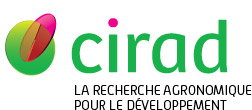Vermeire Marie-Liesse, Cornélis Jean-Thomas, Van Ranst Eric, Bonneville Steeve, Doetterl Sebastian, Delvaux Bruno. 2018. Soil microbial populations shift as processes protecting organic matter change during podzolization. Frontiers in Environmental Science, 6:70, 16 p.

|
Version publiée
- Anglais
Sous licence  . .
6-Vermeire et al 2018 Frontier.pdf Télécharger (2MB) | Prévisualisation |
Résumé : In the upper part of the solum of mineral soils, soil organic and mineral constituents co-evolve through pedogenesis, that in turn impacts the transformation and stabilization of soil organic matter (SOM). Here, we assess the reciprocal interactions between soil minerals, SOM and the broad composition of microbial populations in a 530-year chronosequence of podzolic soils. Five pedons, derived from beach sand, are studied. From young to old soils, net acidification parallels mineral dissolution and the formation of eluvial and illuvial horizons. Organo-mineral associations (OMA) accumulate in the illuvial B horizon of the older soils (330–530 years). Apart from contributing to SOM stabilization and protection, organo-mineral compounds progressively fill up interparticle voids. The subsequent loss of porosity leads to horizon induration, decrease of hydraulic conductivity, which promote redoximorphic processes. While recalcitrant SOM is preserved in the topsoil of the old soils, the largest quantity of protected SOM occurs in the indurated, temporalily waterlogged B horizons, through both the OMA accumulation and inhibition of microbial decomposition. SOM protection is thus both time- and horizon-specific. The microbiota also evolve along the chronosequence. Fungi dominate in all horizons of the younger soils and in the topsoil of the older soils, while bacteria prevail in the cemented B horizons of older soils. This shift in microbial community composition is due to the interdependent co-evolution of SOM and minerals during pedogenesis. Our results call for considering the microenvironment and parameters inherent to decomposer microorganisms to understand SOM protection processes in soils.
Mots-clés Agrovoc : pédon, matière organique du sol, Podzol, pédogénèse, propriété physicochimique du sol
Mots-clés géographiques Agrovoc : France
Mots-clés libres : Organic matter, Microorganisms, Amino sugars, Carbon fractionation, Micromorphology, SOM protection mechanisms, Podzol, Chronosequence
Agences de financement hors UE : Fonds De La Recherche Scientifique - FNRS
Projets sur financement : (BEL) FRFC
Auteurs et affiliations
-
Vermeire Marie-Liesse, UCL (BEL)
 ORCID: 0000-0003-2637-0723 - auteur correspondant
ORCID: 0000-0003-2637-0723 - auteur correspondant
- Cornélis Jean-Thomas, Université de Liège (BEL)
- Van Ranst Eric, Université de Gand (BEL)
- Bonneville Steeve, ULB (BEL)
- Doetterl Sebastian, Université de Gand (BEL)
- Delvaux Bruno, UCL (BEL)
Source : Cirad-Agritrop (https://agritrop.cirad.fr/613733/)
[ Page générée et mise en cache le 2025-08-10 ]




